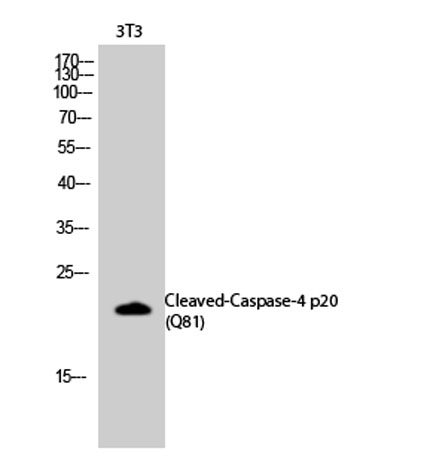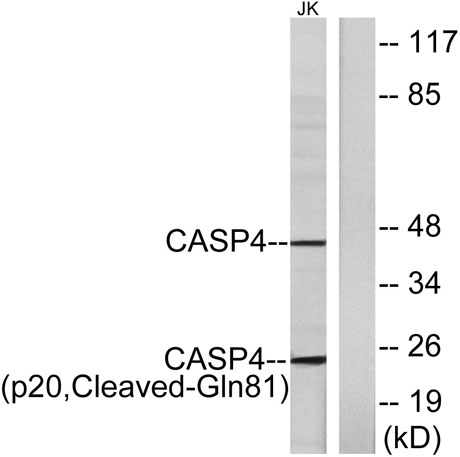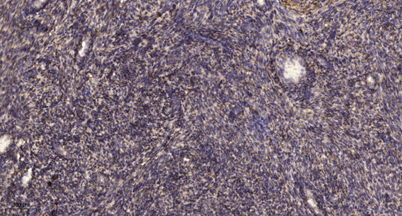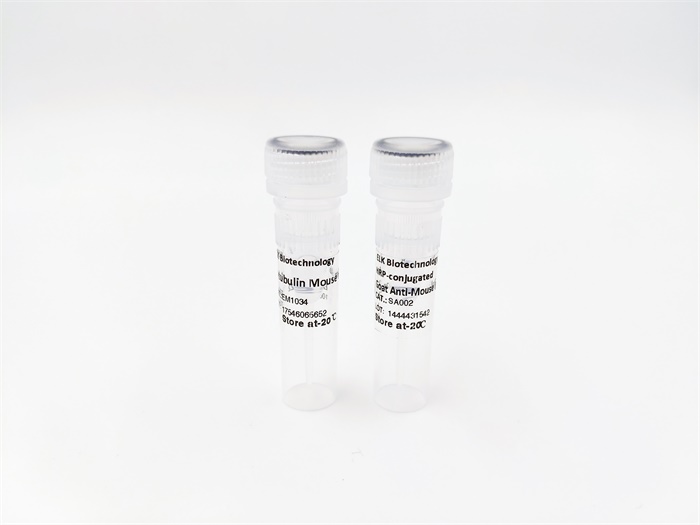



Overview
-
 Western Blot analysis of various cells using Cleaved-Caspase-4 p20 (Q81) Polyclonal Antibody diluted at 1:2000
Western Blot analysis of various cells using Cleaved-Caspase-4 p20 (Q81) Polyclonal Antibody diluted at 1:2000 -
 Western Blot analysis of 3T3 cells using Cleaved-Caspase-4 p20 (Q81) Polyclonal Antibody diluted at 1:2000
Western Blot analysis of 3T3 cells using Cleaved-Caspase-4 p20 (Q81) Polyclonal Antibody diluted at 1:2000 -
 Western blot analysis of lysates from Jurkat cells, using Caspase 4 (p20,Cleaved-Gln81) Antibody. The lane on the right is blocked with the synthesized peptide.
Western blot analysis of lysates from Jurkat cells, using Caspase 4 (p20,Cleaved-Gln81) Antibody. The lane on the right is blocked with the synthesized peptide. -
 Immunohistochemical analysis of paraffin-embedded human uterus. 1, Antibody was diluted at 1:200(4° overnight). 2, Tris-EDTA,pH9.0 was used for antigen retrieval. 3,Secondary antibody was diluted at 1:200(room temperature, 45min).
Immunohistochemical analysis of paraffin-embedded human uterus. 1, Antibody was diluted at 1:200(4° overnight). 2, Tris-EDTA,pH9.0 was used for antigen retrieval. 3,Secondary antibody was diluted at 1:200(room temperature, 45min).
關(guān)閉
在線咨詢
Online consultation
-
在線咨詢
-
技術(shù)支持

關(guān)注微信公眾號


 下載說明 ①
下載說明 ①



